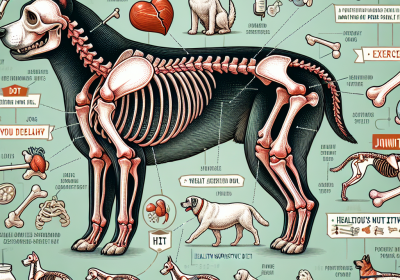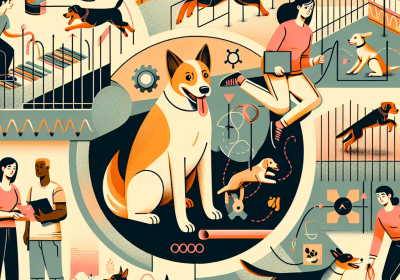History of Canine Freework
Table of Contents
Canine Freework is a relatively modern approach to dog training and enrichment that emphasizes the natural behaviors and instincts of dogs. Rooted in the principles of allowing dogs to explore their environment freely, this method encourages mental stimulation, physical exercise, and emotional well-being. The history of Canine Freework can be traced back to the broader movement towards positive reinforcement and force-free training methods that gained momentum in the late 20th and early 21st centuries. Influenced by advancements in animal behavior science and a growing understanding of the importance of mental health in dogs, trainers and behaviorists began to develop techniques that allowed dogs to engage in self-directed activities. These activities often involve problem-solving, scent work, and interactive play, all designed to tap into a dog’s natural instincts and provide a more fulfilling and balanced life. As the concept of Canine Freework continues to evolve, it remains a testament to the ongoing efforts to improve the quality of life for dogs through compassionate and science-based training methods.
Understanding The Basics Of Canine Freework
Canine Freework is an innovative approach to dog training that emphasizes the importance of allowing dogs to engage in natural behaviors and make choices within a structured environment. This method diverges from traditional training techniques that often rely on commands and obedience, instead focusing on the dog’s autonomy and well-being. Understanding the basics of Canine Freework requires a comprehensive look at its principles, benefits, and implementation.
At its core, Canine Freework is about creating opportunities for dogs to explore their surroundings, interact with various stimuli, and express their innate behaviors. This approach is grounded in the belief that dogs, like humans, benefit from the freedom to make choices and engage in activities that are intrinsically rewarding. By providing a safe and controlled environment, handlers can facilitate experiences that promote mental stimulation, physical exercise, and emotional balance.
One of the fundamental principles of Canine Freework is the emphasis on sensory enrichment. Dogs are naturally curious creatures with a keen sense of smell, sight, and hearing. By incorporating a variety of sensory experiences into their daily routines, handlers can help dogs develop confidence and resilience. For instance, introducing different textures, scents, and sounds can encourage dogs to explore and investigate, thereby enhancing their cognitive abilities and reducing stress.
Moreover, Canine Freework promotes the idea of choice and control. Allowing dogs to make decisions about their activities can lead to a more positive and cooperative relationship between the dog and the handler. This sense of autonomy can be particularly beneficial for dogs that have experienced trauma or anxiety, as it empowers them to take an active role in their own well-being. By observing the dog’s preferences and responses, handlers can tailor activities to suit individual needs, fostering a sense of trust and mutual respect.
In addition to sensory enrichment and autonomy, Canine Freework also emphasizes the importance of physical exercise. Engaging in activities that mimic natural behaviors, such as foraging, digging, and chasing, can provide dogs with the physical outlet they need to maintain a healthy lifestyle. These activities not only promote physical fitness but also help to alleviate boredom and prevent the development of undesirable behaviors. By incorporating a variety of physical challenges, handlers can ensure that dogs receive a well-rounded and fulfilling experience.
Implementing Canine Freework requires a thoughtful and intentional approach. Handlers must create an environment that is both stimulating and safe, taking into consideration the individual needs and preferences of each dog. This may involve setting up designated areas for exploration, providing a range of sensory and physical activities, and closely monitoring the dog’s behavior to ensure their comfort and safety. Additionally, it is important to approach Canine Freework with patience and flexibility, allowing the dog to set the pace and make choices without undue pressure or coercion.
In conclusion, Canine Freework represents a paradigm shift in dog training, prioritizing the dog’s autonomy, sensory enrichment, and physical exercise. By understanding and implementing the basics of this approach, handlers can create a more enriching and fulfilling experience for their canine companions. This method not only enhances the dog’s overall well-being but also strengthens the bond between the dog and the handler, fostering a relationship built on trust, respect, and mutual understanding. As more handlers embrace the principles of Canine Freework, the potential for positive outcomes in dog training and care continues to grow.
Origins And Evolution Of Canine Freework

Canine freework, a relatively recent development in the realm of dog training, has its roots deeply embedded in the broader history of canine-human interaction. The origins of this practice can be traced back to the early domestication of dogs, where humans and canines began to form a symbiotic relationship. Initially, dogs were primarily utilized for their hunting and guarding capabilities. However, as human societies evolved, so did the roles of dogs, leading to the emergence of various training methodologies aimed at enhancing their utility and companionship.
The concept of canine freework began to take shape in the late 20th century, influenced by a growing understanding of animal behavior and psychology. During this period, traditional dog training methods, which often relied on dominance and obedience, started to be questioned. Researchers and trainers began to explore more humane and effective ways to engage with dogs, emphasizing positive reinforcement and the importance of mental stimulation. This shift in perspective laid the groundwork for the development of canine freework.
Canine freework is characterized by its focus on allowing dogs to engage in natural behaviors and make choices within a structured environment. This approach is rooted in the belief that providing dogs with opportunities to explore, sniff, and interact with their surroundings can lead to improved mental and physical well-being. Unlike traditional training methods that often prioritize obedience and control, canine freework encourages dogs to use their innate problem-solving skills and creativity. This not only enhances their cognitive abilities but also strengthens the bond between dogs and their handlers.
The evolution of canine freework has been significantly influenced by advancements in animal behavior research. Studies on canine cognition and sensory perception have revealed the complex ways in which dogs perceive and interact with the world. For instance, research has shown that a dog’s sense of smell is far more acute than that of humans, allowing them to detect and differentiate a vast array of scents. This understanding has led to the incorporation of scent-based activities in canine freework, providing dogs with opportunities to engage their olfactory senses and fulfill their natural instincts.
Moreover, the rise of positive reinforcement training techniques has played a crucial role in shaping the principles of canine freework. Trainers and behaviorists have increasingly recognized the benefits of using rewards, such as treats and praise, to reinforce desired behaviors. This approach not only fosters a positive learning environment but also encourages dogs to actively participate in the training process. By integrating positive reinforcement with freework activities, handlers can create a dynamic and engaging experience for their dogs, promoting both learning and enjoyment.
In recent years, canine freework has gained popularity among dog owners and trainers worldwide. Its emphasis on mental stimulation, choice, and natural behaviors resonates with those seeking a more holistic approach to dog training. Additionally, the versatility of freework activities makes it suitable for dogs of all ages, breeds, and temperaments. Whether it involves navigating obstacle courses, solving puzzles, or engaging in scent work, canine freework offers a diverse range of activities that cater to the individual needs and preferences of each dog.
As the field of canine freework continues to evolve, ongoing research and innovation will likely lead to further refinements and new applications. The growing recognition of the importance of mental enrichment and choice in dog training underscores the potential of canine freework to enhance the lives of dogs and their human companions. By embracing this approach, we can foster a deeper understanding and appreciation of our canine friends, ultimately strengthening the bond that has existed between humans and dogs for millennia.
Benefits Of Implementing Canine Freework In Training
Canine Freework, a relatively recent development in the field of dog training, has garnered significant attention for its innovative approach and numerous benefits. This method, which emphasizes allowing dogs to explore their environment freely and engage in natural behaviors, has proven to be a valuable tool in enhancing the overall well-being and training outcomes for dogs. By understanding the benefits of implementing Canine Freework in training, dog owners and trainers can make more informed decisions about incorporating this technique into their routines.
One of the primary benefits of Canine Freework is its positive impact on a dog’s mental health. Traditional training methods often focus on obedience and structured activities, which, while effective, can sometimes lead to stress and anxiety in dogs. In contrast, Canine Freework encourages dogs to use their senses and instincts to navigate their surroundings, promoting mental stimulation and reducing stress. This approach allows dogs to engage in problem-solving and decision-making, which can significantly enhance their cognitive abilities and overall mental well-being.
Moreover, Canine Freework fosters a stronger bond between dogs and their handlers. By allowing dogs the freedom to explore and make choices, handlers can observe and understand their dogs’ natural behaviors and preferences. This deeper understanding can lead to more effective communication and a more harmonious relationship. Additionally, the trust that develops from this mutual respect can enhance the dog’s responsiveness to training and increase their willingness to cooperate.
Another notable benefit of Canine Freework is its ability to improve a dog’s physical health. Traditional training often involves repetitive tasks that can lead to physical strain or injury over time. In contrast, Canine Freework encourages varied and natural movements, which can help improve a dog’s overall physical fitness and coordination. This method allows dogs to engage in activities that promote muscle development, flexibility, and cardiovascular health, contributing to a more balanced and healthy lifestyle.
Furthermore, Canine Freework can be particularly beneficial for dogs with behavioral issues. Dogs that exhibit anxiety, fear, or aggression often do so because they feel a lack of control over their environment. By providing these dogs with opportunities to explore and make choices, Canine Freework can help reduce these negative behaviors. The sense of autonomy and empowerment that comes from this approach can lead to increased confidence and a more positive outlook, making it easier to address and modify problematic behaviors.
In addition to these benefits, Canine Freework can also enhance the effectiveness of traditional training methods. By incorporating elements of freework into a structured training regimen, handlers can create a more balanced and holistic approach. This combination can lead to more well-rounded and adaptable dogs, capable of performing well in both structured and unstructured environments. The flexibility of Canine Freework allows it to be tailored to the individual needs and preferences of each dog, making it a versatile and valuable addition to any training program.
In conclusion, the benefits of implementing Canine Freework in training are manifold. From improving mental and physical health to fostering stronger bonds and addressing behavioral issues, this innovative approach offers a comprehensive solution for enhancing the overall well-being of dogs. By embracing the principles of Canine Freework, dog owners and trainers can create a more enriching and effective training experience, ultimately leading to happier and healthier dogs.
Read more about Canine Freework
What is Canine Freework?
– The Definition of Canine Freework
– Benefits of Canine Freework for Dogs
– History of Canine Freework
– Different Types of Canine Freework
– How to Get Started with Canine Freework






![The Dog Podcast Uncovers Startling Truths About What We Feed Our Dogs [Press Release]](https://insightfulwords.com.au/wp-content/uploads/2024/08/nutritious-dog-food-400x280.jpg)


